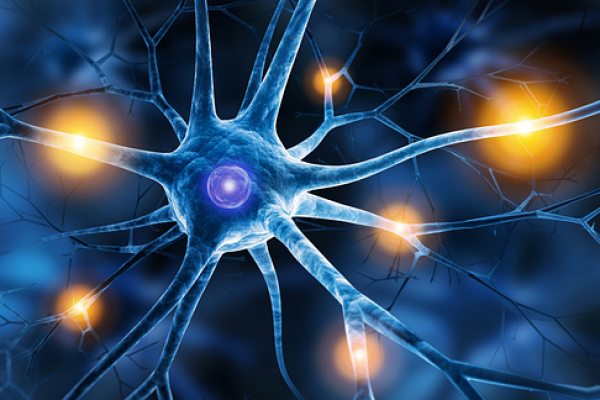Increased Emphasis on Combining Pharmacological, Psychological, and Physical Therapies for Holistic Pain Relief
Chronic pain can be overwhelming and isolating. A better understanding of pain relief offers more hope to millions of people worldwide. An inclusive care model emphasizes a holistic approach, combining pharmacological, psychological, and physical therapies to provide more comprehensive and personalized treatment plans. In this article, we’ll dive into why these patient-centered approaches are becoming the gold standard in pain management—and how they work.
Coordinated and Inclusive Pain Management refers to the use of multiple strategies to address pain, targeting different mechanisms and systems in the body. By combining medications, psychological therapies, and physical interventions, patients can experience a more balanced path to relief, minimizing the reliance on any one treatment.
For decades, pain management focused heavily on medications, particularly opioids. However, rising concerns about opioid addiction, tolerance, and side effects have pushed healthcare professionals to seek more holistic strategies. A 360-degree consideration of the patient aims to provide relief without the drawbacks of overdependence on a single treatment approach.
A one-size-fits-all approach to pain management is rarely effective. Relying solely on medication can lead to addiction, diminished efficacy over time, and increased side effects. In contrast, an integrated care plan addresses the complex nature of chronic pain more effectively.
As chronic pain conditions—such as age-related back pain—become more prevalent, patients and doctors alike are seeking safer, long-term solutions. An individualized, tailored care model offers a way to integrate non-drug treatments into the mix, promoting overall health and wellness alongside pain relief.
The Core Components of an Inclusive Care Model for Pain
Rule #1 – TREAT WHAT IS TREATABLE:
Our primary obligation to the patient is to identify and treat reversible causes of pain.
The first priority is an initial assessment aimed at identifying reversible and treatable causes of both acute and long-standing pain conditions. Early consideration of interventional procedures or surgery is essential. Timely intervention reduces the impact and necessity for long-term pain management strategies.
Pharmacological Interventions
Pharmacological therapies include non-opioid painkillers, steroid injections, and, in some cases, opioids. However, these medications are now used more sparingly and often as part of a broader, optimized care plan for better results.
Psychological Therapies for Pain Relief
Pain isn’t just a physical sensation—it has emotional and psychological components. Addressing anxiety, depression, or the mental strain of living with pain can significantly improve treatment outcomes. Techniques such as cognitive behavioral therapy (CBT) are now standard considerations in any comprehensive care model.
Physical Therapies and Their Role
Physical therapies, including physiotherapy, exercise physiology, myotherapy, stretching, and exercise programs, help patients regain strength, flexibility, and functionality—crucial elements of long-term pain management.
Pharmacological Therapies
Non-Opioid Painkillers: The Safer Alternatives
Non-opioid drugs such as paracetamol or NSAIDs are often the first line of defense in a coordinated and inclusive treatment plan. These medications offer pain relief without the risk of dependency, making them a safer option for long-term use.
The Role of Opioids in an Integrated Care Strategy
While opioids can still play a role in a patient-centered approach, their use is more controlled and limited to short-term, severe cases. This minimizes the risk of addiction while providing necessary relief during acute episodes.
Psychological Therapies
Cognitive Behavioral Therapy (CBT) for Pain
CBT helps patients reframe negative thought patterns related to their pain, providing coping mechanisms that reduce the emotional burden of chronic pain. It significantly improves quality of life by changing the individual’s relationship with pain.
Mindfulness and Meditation
Mindfulness-based stress reduction (MBSR) and meditation help individuals manage pain by reducing stress, focusing attention, and promoting relaxation. These therapies offer mental relief, enhancing the effectiveness of the integrated care plan.
Physical Therapies
The Benefits of Physical Therapy
Physical therapy strengthens the body, improves mobility, and reduces pain through targeted exercises. It is often a cornerstone of inclusive care, particularly for arthritis, back pain, or post-surgical recovery.
Incorporating Yoga and Stretching
Yoga and stretching increase flexibility and reduce muscle tension, making them valuable tools for managing chronic pain. They also foster relaxation and mental well-being, providing dual benefits.
The Advantages of a Coordinated & Inclusive Approach
Reduced Dependency on Medications
One of the biggest benefits of a comprehensive, inclusive approach to pain management is improved control with reduced reliance on medications—especially opioids. By addressing pain through multiple pathways, patients rely less on drugs and more on sustainable therapies, reducing side effects such as sedation and cognitive impairment, especially in older adults.
Improved Long-Term Outcomes
Patients receiving a well-considered, integrated care plan report better functionality, reduced pain intensity, and improved quality of life. Tackling pain from multiple angles leads to more lasting success.
Challenges in Implementing a Comprehensive Pain Care Plan
Barriers in Healthcare Systems
Inclusive care models require expert coordination between healthcare providers, which can be difficult due to systemic inefficiencies or lack of resources. At Axxon Pain Medicine, access to physical therapy, psychological care, and surgical expertise allows for routine implementation of these approaches.
Patient Compliance and Education
For individualized, tailored care to be effective, patients must understand their role. Consistent participation in therapies and adherence to treatment routines are crucial for success.
Future of Integrated Pain Care
Technology Integration in Pain Management
The future of pain management includes technology integration. Wearable devices that monitor pain, mindfulness apps, and AI-powered tools are poised to enhance comprehensive care plans.
Personalized Pain Treatment Plans
As our understanding of pain advances, care will become more customized. By factoring in each patient’s unique history, lifestyle, and preferences, optimized care plans can deliver even more effective, sustainable relief.
Conclusion
Integrated and inclusive care offers a new way forward for patients with chronic pain. By combining pharmacological, psychological, and physical therapies, this approach delivers sustainable relief with fewer side effects and more personalization. It’s transforming lives and offering real hope to those seeking lasting solutions.
Axxon Pain Medicine continues to monitor the trends to ensure we will always continue to be at the forefront on Chronic Pain treatment.


